Canon PowerShot SD300: The Best Ultra-Compact in its Class?
by Stephen Caston on February 23, 2005 4:00 PM EST- Posted in
- Digital Camera
General Image Quality
For these pictures, the camera was reset to its factory default setting. Then, it was set to its highest quality recording setting. The pictures were then taken in Auto mode unless stated otherwise. Portrait-style images have been rotated using Irfanview's "lossless operations". Click on a thumbnail to view the full-size image. All images are in sRGB color space. 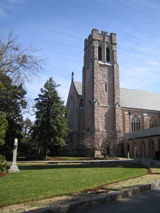 Click to enlarge. |
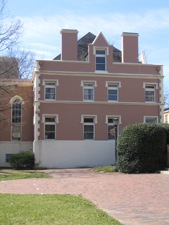 Click to enlarge. |
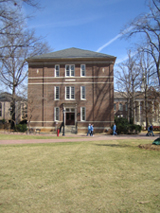 Click to enlarge. |
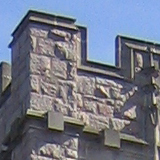 |
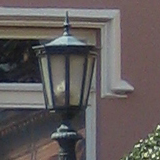 |
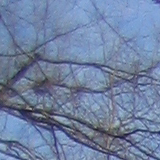 |
In the first sample above, the SD300 proves capable of producing images with excellent detail. We also noticed some blurring near the corners of the frame. Again, in the second sample, we were very impressed with the level of detail. However, we noticed some purple fringing along the top of the building and the branches at the upper-left of the frame. In the third sample, we have highlighted more corner blurring. We found this to be much more common in pictures taken at a wide angle than at the telephoto end of the optical zoom.
 Click to enlarge. |
 Click to enlarge. |
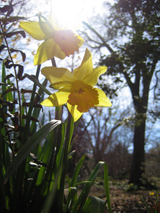 (Macro mode, + 0.7 EV) Click to enlarge. |
 |
 |
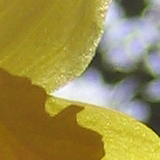 |
In the first sample above, we have cropped out a portion of the frame that reveals some JPEG artifacts. Although this was not a common problem with the SD300, it does appear in shadow areas such as this. In the second sample, our crop shows significant purple fringing around one of the subjects. We should also point out that corner blurring was not as much of an issue in this picture, since we had the camera at the telephoto end of the zoom. In the final sample, the SD300 proves that it can take some very good macro pictures. To counter the strong backlighting, we applied an exposure compensation of + 0.7 EV. With the ability to focus as close as 1.2", this camera certainly offers a lot of possibilities to the macro photographer.
Overall, we were very impressed with the SD300's image quality. The main issues were purple fringing and softness in the corners. We feel that both of these issues aren't so bad that they would compromise overall image quality. In fact, in an 8"x10" print, they would probably be hard to notice at all.
Long Exposure
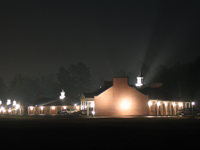 (8 seconds, ISO 50) Click to enlarge. |
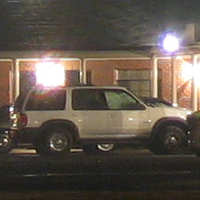 |
By enabling the "Long Shutter" option in Manual mode, the SD300 can expose images for up to 30 seconds. In our 8-second exposure above, the camera proves capable of capturing a respectable level of detail. We were expecting a less grainy image at ISO 50, but the amount of detail is decent. You can also see some purple fringing around the lights.
Movie Mode
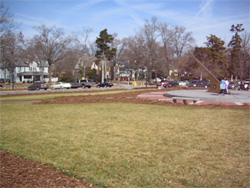
(640x480, 30 fps)
Click to view.










30 Comments
View All Comments
ElFenix - Thursday, February 24, 2005 - link
your title is funnybest [class] camera in its class?
=)
nice review, otherwise. i really want a small camera for parties, etc. my S40 takes up too much space in my pocket, along with my cell phone.
TrueWisdom - Thursday, February 24, 2005 - link
I'm of the opinion that the Casio EXILIM series are better cameras than these. I have the Z-55 and it's the speediest 5MP ultracompact I've come in contact with. I'd like to see Anandtech do a review of the Z-40, Z-50, Z-55, and the EX-S100 to see how they stack up.drwho9437 - Thursday, February 24, 2005 - link
Quasi review:I have an SD200 which is the same camera apart from the sensor, (3.2 instead of 4, save 100 dollars). Things to note about the SDX00 series (new 400, and 500 were introduced).
Firstly, there are more CAs then the average digital (purple fringing), quite alot of it looks to be blooming (ie leakage charging). The lens is definatly soft in the corners, this seems to be the most distrubing when you have something with random high detail, ie tree branches, but not so bad when you have uniform high detail, say grass.
These cameras are said not to have an aperture, instead, they are said to have a ND filter, to cut the light in half. There have been some comments that corner softness in lessed when the camera decides to shoot at a high "aperture" but I have not confired them. The camera itself does not display the shutter speed or aperture even in review mode so its difficult to do that test.
On the flipside I did notice corner softness decrease as focal length increased (probably because that really works like an aperture, it uses just the center of the lens at tele), so if you want a really sharp picture of something standback and zoom in. (I never thought I'd say that).
The video mode is good, but you'll need a fast SD card to do it at 640X480 30fps consistently. The one I have is borderline, and depends what I am taking it of, a little ! warns the buffer is getting full. However 320X240 modes always works for those really long videos at need, if your card ends up not being quite fast enough.
So it is clear I got this camera, so that I would always have a camera with me, I have SLRs for the good stuff, I new about most of the issues I mentioned before I got it, most of them can be worked around.
The highest prase I can give it is I didn't return it.
Souka - Thursday, February 24, 2005 - link
I have a Canon S300 (over 3 years old...) and I'm looking to replace it.I really really like the S410, but once I saw the SD300 I was hooked, the DigiII chip speed rocks.
Well alomst hooked.... The point of a camera is to take pictures....good pictures in my opinion.
The SD300 does a good job, but the flare from flashes and the purple fringing are horrible. I've compared side-by-side shots of my S300 to the SD300. My old S300 takes MUCH better pictures despite 1/2 the resolution (and twice the weight and size!.....but if I wanted to enlarge a print...to lets say 8x10...the SD300 is better.
I guess the S410 is my best option for now.... I'll live with the puny LCD and useless video mode....it's a camera damnit, not a vide camera.
Anyhow.... maybe the SD310 will be better? (A guess)
Cheers....
stephencaston - Thursday, February 24, 2005 - link
#12, I agree with #14. Unless you really need the extra MP, I would go with the SD300 for its speed. If you really want a 5 MP ultra-compact, it might be worth waiting until the SD400 becomes available.R3MF - Thursday, February 24, 2005 - link
@ #6cheers, i didn't know that. :)
tyipengr - Thursday, February 24, 2005 - link
Sorry for the blank post earlier...#12-
I considered the same two cameras before ultimately purchasing the SD300. The speed of the Digic II, the vastly superior movie mode, and the 2-in. LCD got me at the end. I personally do not edit pictures very much so the extra 1-MP isn't as important to me. 4 MP is enough for 8x10s which is the largest I will ever blow up a pic.
tyipengr - Thursday, February 24, 2005 - link
brownba - Thursday, February 24, 2005 - link
Stephen: I'm looking to buy a camera for my wedding this summer. I'm sure it'll be one of the canon elph's. The S500 is almost the same price as this SD300, which would you recommend? or just in general, which ultra-compact would you recommend?sxr7171 - Thursday, February 24, 2005 - link
I have this camera and it probably is the top digital camera in its size class. There are some downsides to having such a small camera especially with regard to the purple fringing, and some of the graininess in night shots (due to the tiny photosensor), but it has some crazy attributes that make an amazing camera. One is the unreal speed of this thing. It is ready to take pictures within a second of turning on and it takes pictures with almost no delay at all when already powered on. It also has unreal battery life. I tested it once at home by taking 50% flash shots continuously in rapid-fire mode and it took over 1700 shots before the battery died. These things make it almost flawless for its main purpose - to take a bunch of casual pictures when on vacation without worrying about the battery dying and to get the shot you want without losing it while the camera is still trying to focus/turn on/bring the lens out etc.Does anyone know if there is a way to reduce the oversharping though? I'm not too happy about that. I know the Digital Rebel comes with sharpness set a little high by default but they allow you to reduce back to the EOS-10D/20D default levels.